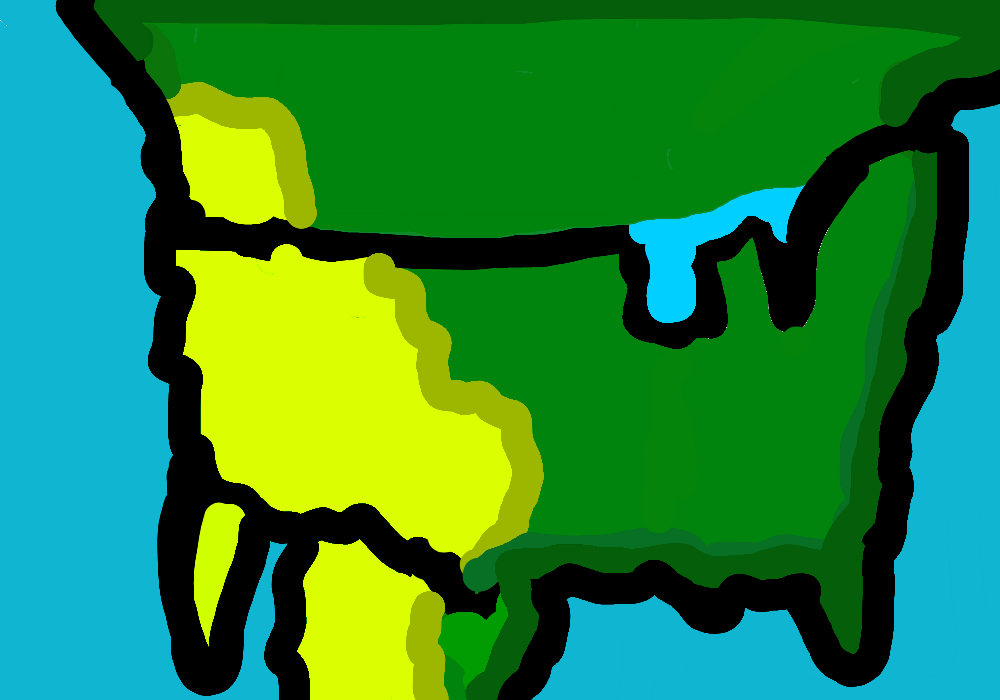
@Justin14
52 followers
161 following
The Flag Of Alabama
Came Out In: 6/22/24
Indigenous peoples of varying cultures lived in the area for thousands of years before the advent of European colonization. Trade with the northeastern tribes by the Ohio River began during the Burial Mound Period (1000 BCE – 700 CE) and continued until European contact.[28]
The agrarian Mississippian culture covered most of the state from 1000 to 1600 CE, with one of its major centers built at what is now the Moundville Archaeological Site in Moundville, Alabama.[29][30] This is the second-largest complex of the classic Middle Mississippian era, after Cahokia in present-day Illinois, which was the center of the culture. Analysis of artifacts from archaeological excavations at Moundville were the basis of scholars' formulating the characteristics of the Southeastern Ceremonial Complex (SECC).[31] Contrary to popular belief, the SECC appears to have no direct links to Mesoamerican culture but developed independently. The Ceremonial Complex represents a major component of the religion of the Mississippian peoples; it is one of the primary means by which their religion is understood.[32]
Among the historical tribes of Native American people living in present-day Alabama at the time of European contact were the Cherokee, an Iroquoian language people; and the Muskogean-speaking Alabama (Alibamu), Chickasaw, Choctaw, Creek, and Koasati.[33] While part of the same large language family, the Muskogee tribes developed distinct cultures and languages.
European settlement
Main articles: New France, Louisiana (New France), French and Indian War, Treaty of Paris (1763), New Spain, Louisiana (New Spain), West Florida, Indian Reserve (1763), American Revolutionary War, Treaty of Paris (1783), Spanish West Florida, Seminole Wars, Adams–Onís Treaty, Republic of West Florida, and Mississippi Territory
Indigenous peoples of varying cultures lived in the area for thousands of years before the advent of European colonization. Trade with the northeastern tribes by the Ohio River began during the Burial Mound Period (1000 BCE – 700 CE) and continued until European contact.[28]
The agrarian Mississippian culture covered most of the state from 1000 to 1600 CE, with one of its major centers built at what is now the Moundville Archaeological Site in Moundville, Alabama.[29][30] This is the second-largest complex of the classic Middle Mississippian era, after Cahokia in present-day Illinois, which was the center of the culture. Analysis of artifacts from archaeological excavations at Moundville were the basis of scholars' formulating the characteristics of the Southeastern Ceremonial Complex (SECC).[31] Contrary to popular belief, the SECC appears to have no direct links to Mesoamerican culture but developed independently. The Ceremonial Complex represents a major component of the religion of the Mississippian peoples; it is one of the primary means by which their religion is understood.[32]
Among the historical tribes of Native American people living in present-day Alabama at the time of European contact were the Cherokee, an Iroquoian language people; and the Muskogean-speaking Alabama (Alibamu), Chickasaw, Choctaw, Creek, and Koasati.[33] While part of the same large language family, the Muskogee tribes developed distinct cultures and languages.
European settlement
Main articles: New France, Louisiana (New France), French and Indian War, Treaty of Paris (1763), New Spain, Louisiana (New Spain), West Florida, Indian Reserve (1763), American Revolutionary War, Treaty of Paris (1783), Spanish West Florida, Seminole Wars, Adams–Onís Treaty, Republic of West Florida, and Mississippi Territory
Other Minitoons by @Justin14








































































































